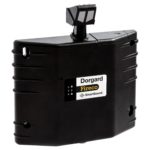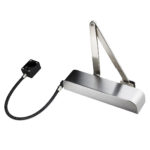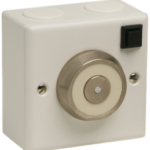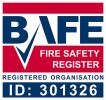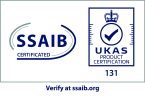What makes Fire doors different?
A Fire door is one that has been specially designed and built to resist Fire for a set period of time. The most widely used fire door is the FD30. When installed properly with the correct fittings, this model of door will provide a barrier against smoke and flames for up to half an hour.
There are other Fire door ratings which are designed to withstand a Fire for a longer period of time.
FD60 = 60 minutes / FD90 = 90 minutes / FD120 = 120 minutes
How are they Tested?
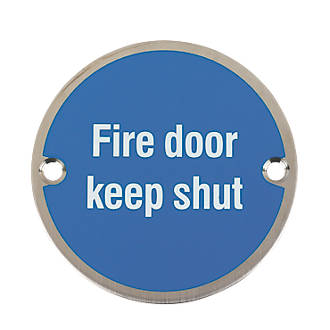

The Fire door and associated furniture is installed on a test wall, in exactly the same manner as they would be on site. The door is then subjected to the same heat conditions that it would experience in a real fire situation.
During the test, the upper part of the door will be subjected to a small amount of positive pressure matching the conditions it would most likely be subject to in a fire.
The door is tested from both sides to ensure its performance regardless of side facing the Fire. In order to do this two separate doors are tested.
Throughout the procedure testing, the door is continually
monitored to clarify it’s integrity and strength. During this part of the test, a combustible pad will be placed on the unexposed side of the door to see how long it takes to ignite.


A Fire door is often the last barrier between you and a Fire. It could end up being the deciding factor that saves life
Do all interior doors need to be Fire doors?
Not necessarily, each property is different depending on layout and the buildings Fire strategy. If you’re developing a property or undertaking a substantial extension, conversion or other renovations your architect should specify if they’re required.
Fire doors are required if you have a door leading from a garage to the main house in a two-storey property, or if you are renovating or building a home with three or more floors including a loft conversion.
In this situation, every room leading from the stairwells must have Fire doors. If in doubt, always ask an industry expert for advice.
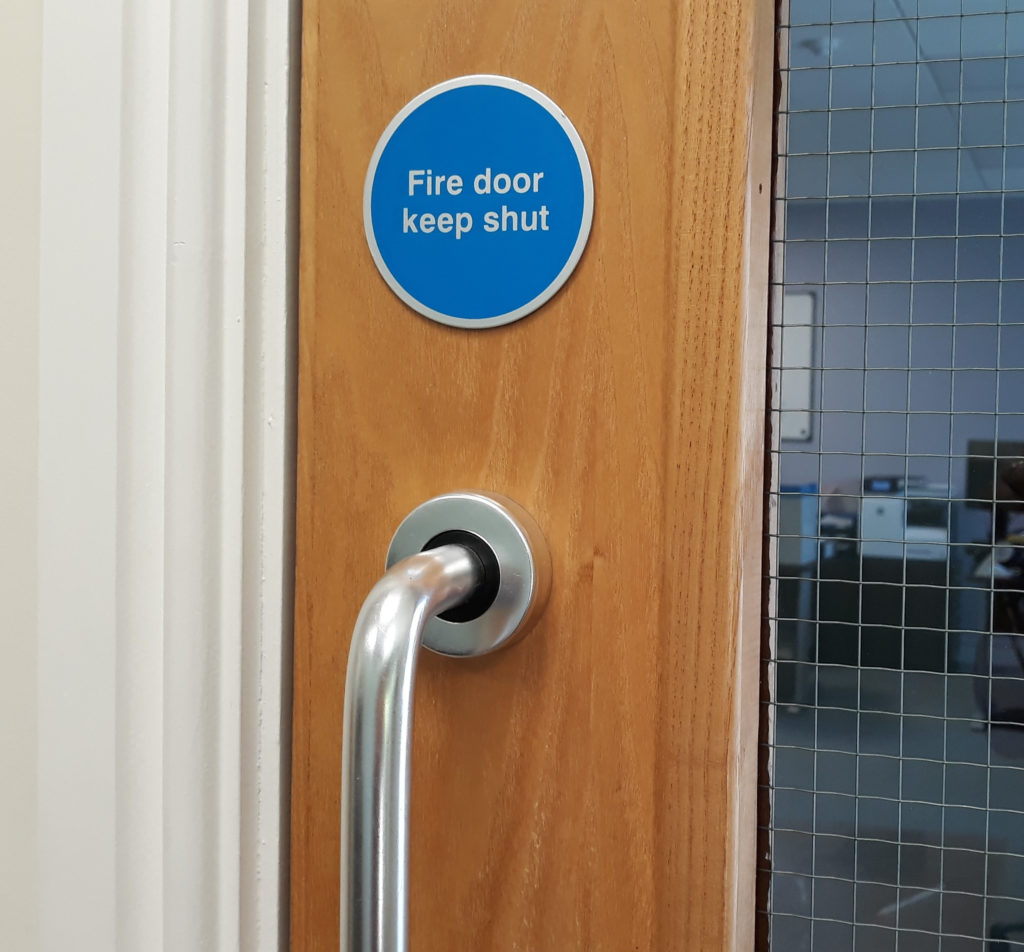

Can you prop open a Fire door?
The short answer is no. In the eyes of the law if a fire door has been propped or wedged open and deemed to endanger life, you could be subject to penalties, including a substantial fine.
Fire doors are an essential part of a buildings Fire prevention strategy and must be closed in order to prevent the spread of fire and smoke. They are specifically designed and manufactured to prevent the spread of fire and smoke through a building, giving people time to evacuate safely.
The second purpose they serve is to slow the Fires progression minimising property damage. Fire doors that are left open allow the Fire to spread, putting everyone in the building at risk.
Open fire doors can cause life-changing consequences to everyone involved. The responsible party(s) faces huge financial repercussions or even a prison sentence, but ultimately this is about the potential for loss of life.
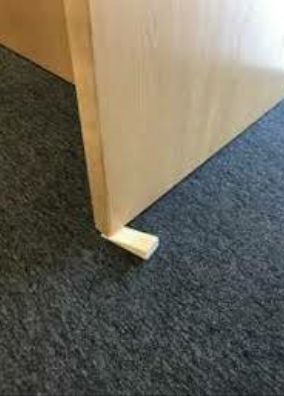

Click any of the boxes above to read the Government investigation into the Fire door industry
There are other things to consider
In the event of a fire, it is possible for an insurer to deny paying damages when it has been proven that a Fire door was left open. The majority of fire doors are FD30 models which will contain a fire in a room for 30 minutes, hopefully by then the Fire brigade will be on site.
Fire doors that are held open can, and have caused a chimney effect making the fire to spread rapidly and ultimately resulting in a total loss.
Despite the inherent dangers of keeping Fire doors open, over 60% of sites visited by the Fire Service have had fire doors held open.
All Fire doors should be clearly labelled stating ‘Fire door, keep shut’. Should you find any that have been held open, you need to remove the obstruction so the door can return to the closed position.
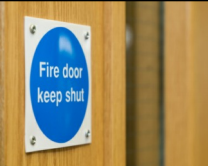

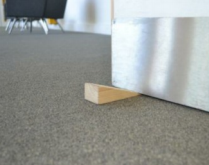

An open Fire door might as well not be there.
Why do people prop Fire Doors open?
The reality is that closed Fire doors can be a pain. They are a nuisance when trying to get through carrying anything with both hands and can be an obstruction for wheelchair users or those that carry a walking stick or push a pram. In the summer months we see the most cases of door propping as Fire doors can restrict the flow of air making a room much hotter.
In certain environments such as care homes or supported living sites, Fire doors can prove a struggle to get through due to their weight. They can sometimes be difficult to open, particularly for the elderly, those with mobility issues, or young children at schools and nurseries.
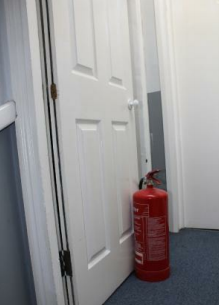

By holding open a fire door you are compromising the safety of others and putting lives at risk. It is against the law.
Is there a Legal way to hold them open?
You can easily provide your building with a compliant solution to this problem retrospectively. There are a number of specially designed products which allow doors to be held open, but will release the doors to close automatically when the Fire Alarm is activated.
The quickest and simplest solution is the Dorguard® by Fireco. This cost-effective product is installed at the bottom of any Fire door and has a push down stopper which holds the door open. The unit is battery powered and requires no cabling. It works by ‘listening’ continuously and upon hearing the Fire alarm releases the stopper to allow the door to return to its closed position.
The next option, and that preferred by larger care homes or housing Authorities is a Swing-free closer. These are a range of Door closers that are mains powered and linked to the Fire Alarm. The units allow the door to be used in an ordinary fashion and can also be put into a ‘Hold open’ position. When the Fire alarm is activated these units will release and return the door into the closed position.
Lastly is a Fire Alarm linked, magnetic door retainer. These provide a Magnetic holder which is permanently fixed to the wall, the Fire door is opened to its full extent and the magnet will hold it in place. Again, upon the Fire alarm activating the doors are released. This solution is
generally installed at the same time as the Fire Alarm. Devices like the above allow residents the freedom to use their properties as they wish, without compromising on Fire safety. Both solutions are completely compliant with UK Fire regulations and can be installed on nearly any type of door.
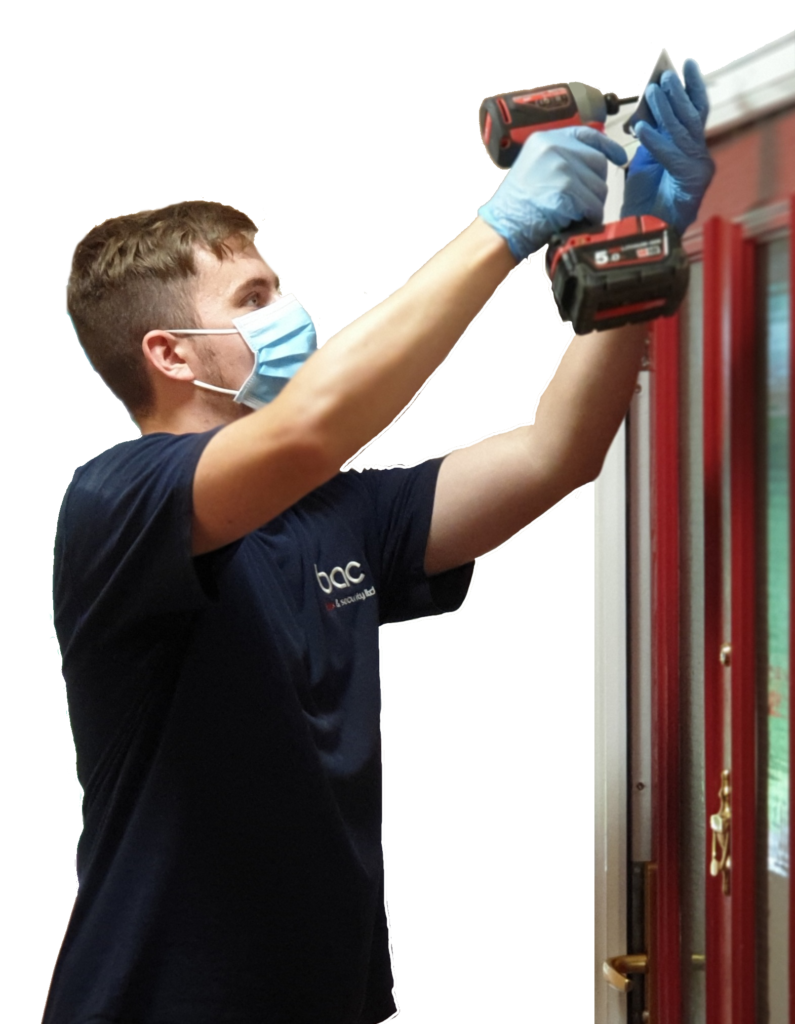

Fire Door Falsehoods
Below are some of the things we regularly hear, and the facts behind each one.
‘You can just paint a door with Fire retardant paint to make it a Fire door’
FALSE: Fire doors are made of fire-tested materials and components, all of which
are graded and shown on the fire door certificate. Painting a door does not effect
its composition and so is not recognised as a fire door by The BWF.
‘If someone rents a property, it’s their responsibility to know about fire safety’
FALSE :If you are the landlord and the ‘Responsible person’ under the Fire Safety Order, the responsibility for the Fire safety of your buildings occupants sits on your shoulders. Recent polls have shown that over 50% of UK Flat tenants have no idea who their ‘Responsible Person’ is for their building.
‘The gap between the frame and the fire door doesn’t need to be that precise’
FALSE: The gap between the door and the frame is critical in preventing toxic fumes and smoke getting through. Research shows that over 30% of fire doors inspected had gaps exceeding 3mm. The Fire door certificate will state what it should be. The gap at the bottom of the door can be slightly larger at up to 8mm, but it depends on the door.
‘I can fit any lock on my Fire doors can’t I?, They’re made of metal so they’ll be fine’
FALSE: The lock must be fire tested and BWF Fire door certified. Metal reaches incredible temperatures during a fire and can quickly change from the strongest part of your door to the weakest.
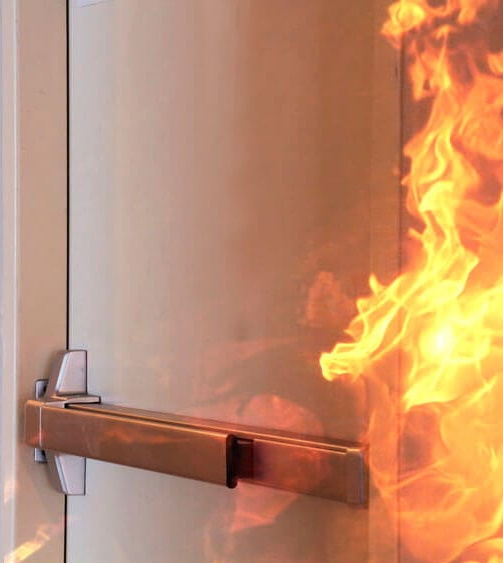

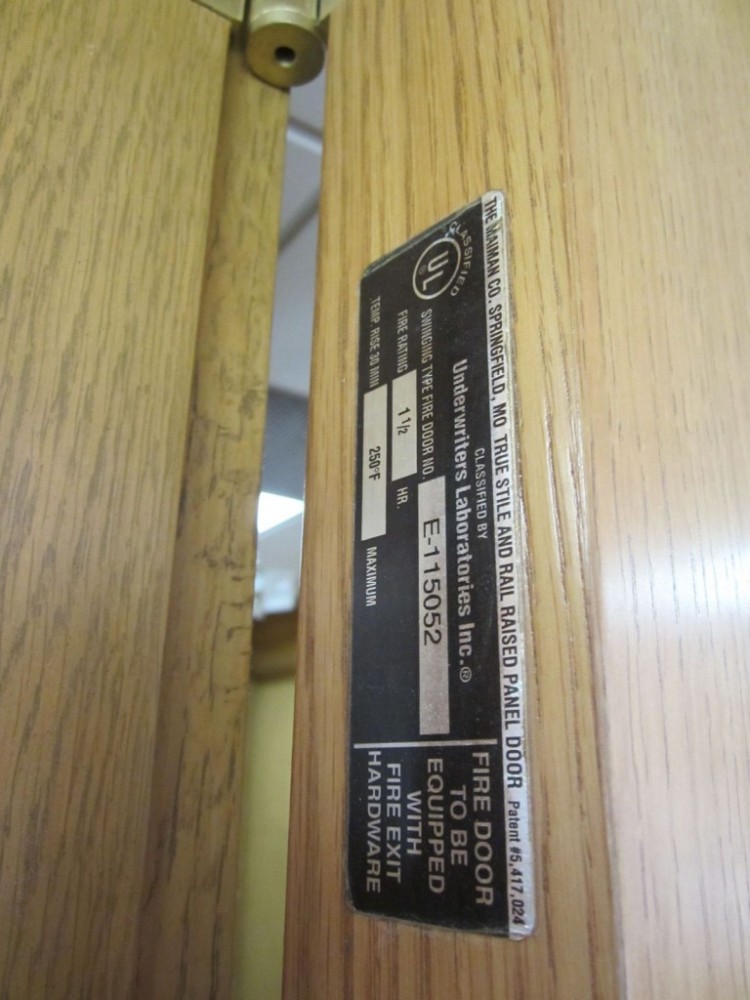

Over 61% of fire doors had fire or smoke seals either missing, installed incorrectly or not filling gaps correctly
(2018 Study by the Fire Door Inspection Scheme)
Things to remember
Every fire door must have an independently accredited test Certificate which is current. This is your proof of the door’s fire rating, what tests it was subject to, and that it was manufactured compliantly. It also evidences that the door’s components meet the required criteria. Lastly, it provides information about its installation.
Look for a label or tag on the top of the door, this can be occasionally found on the side of the door as well. Unless your door has a certification mark, It cannot be guaranteed that it is a properly certified fire door.
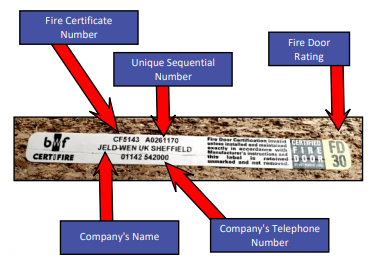

If you would like to know more about how we can help you meet your Fire safety obligations, call or email our team of experts to arrange a free of charge Fire consultation.
Call 0117 958 38 38
E-mail service@bacsecurity.com





